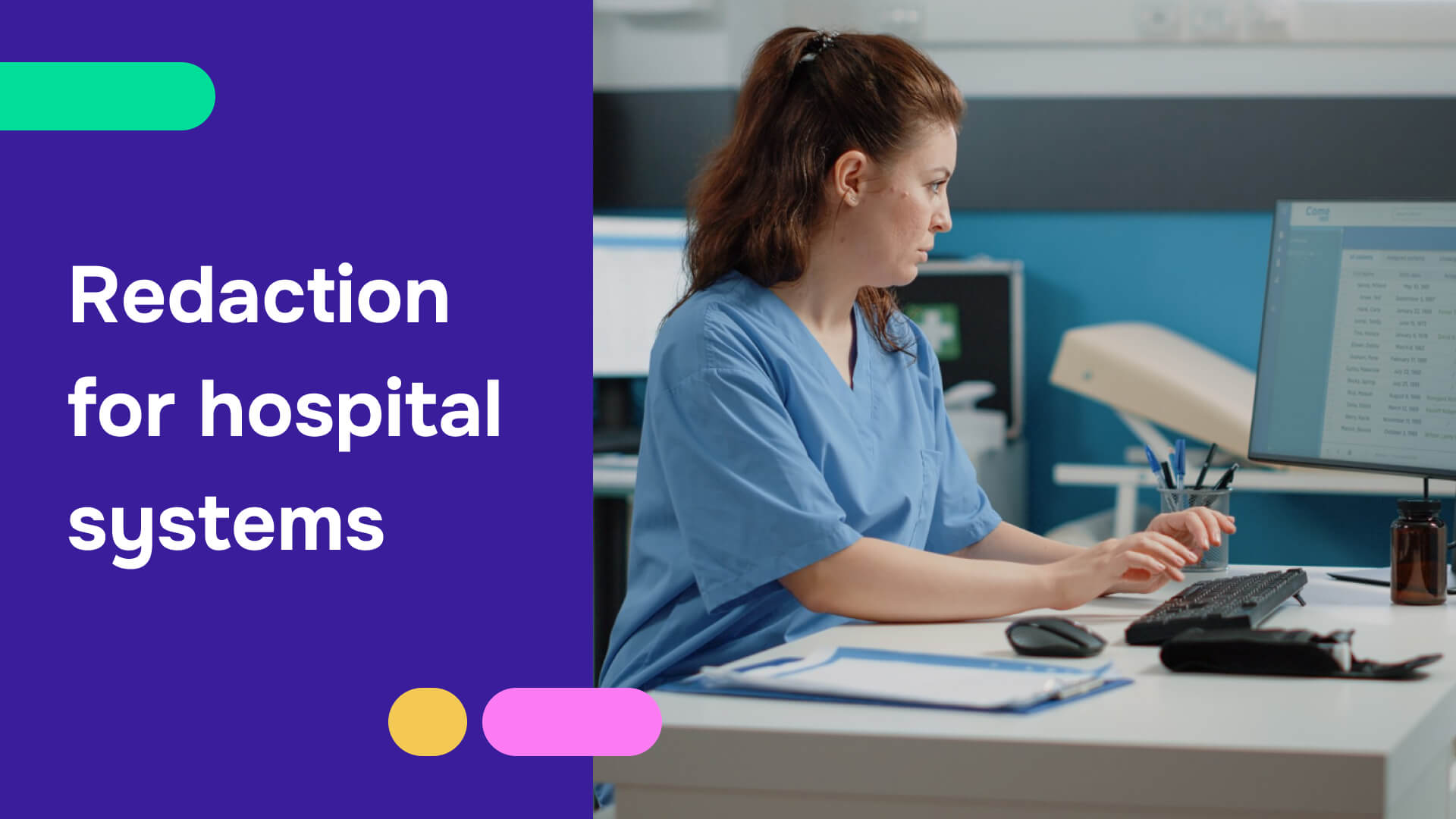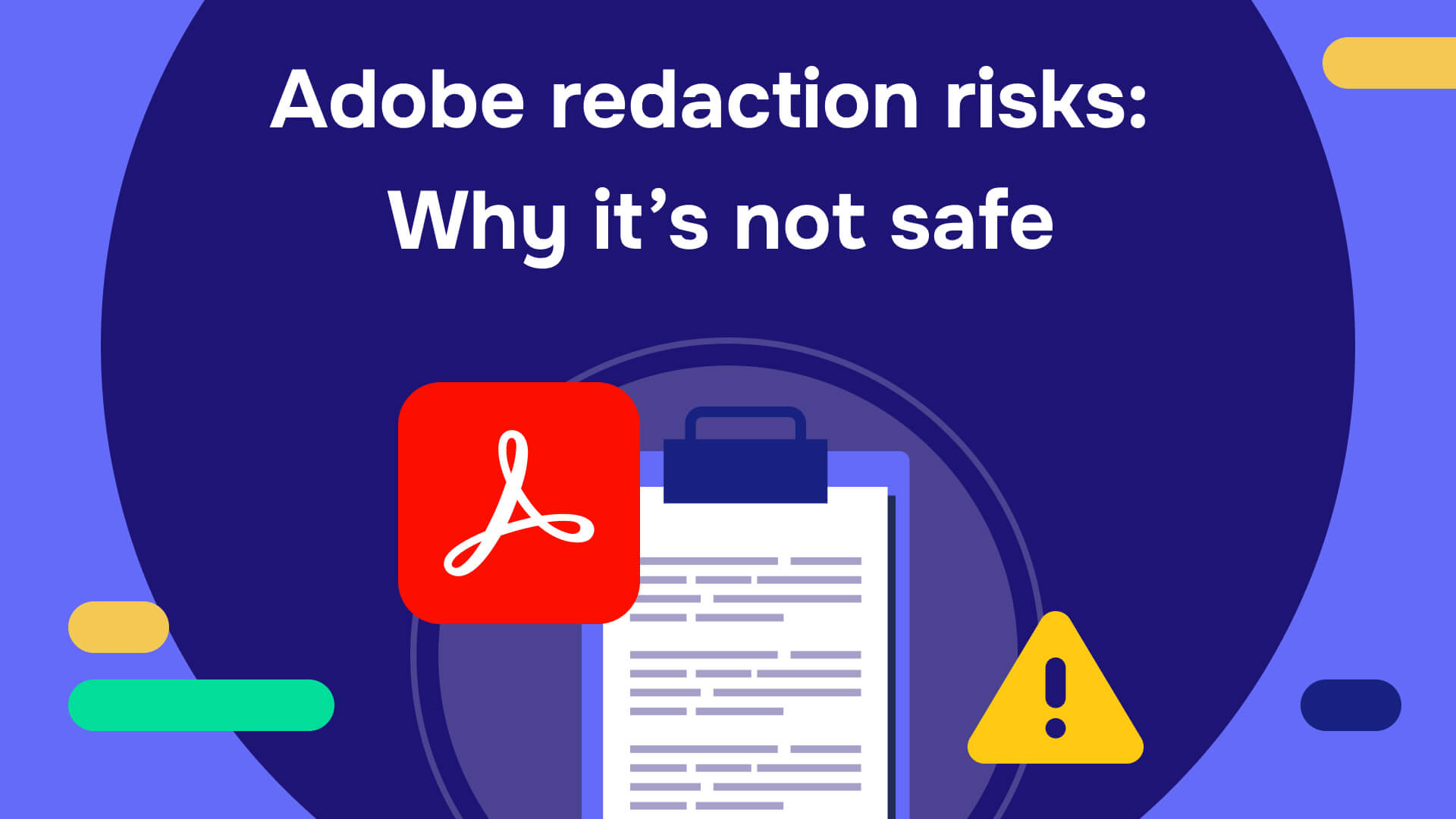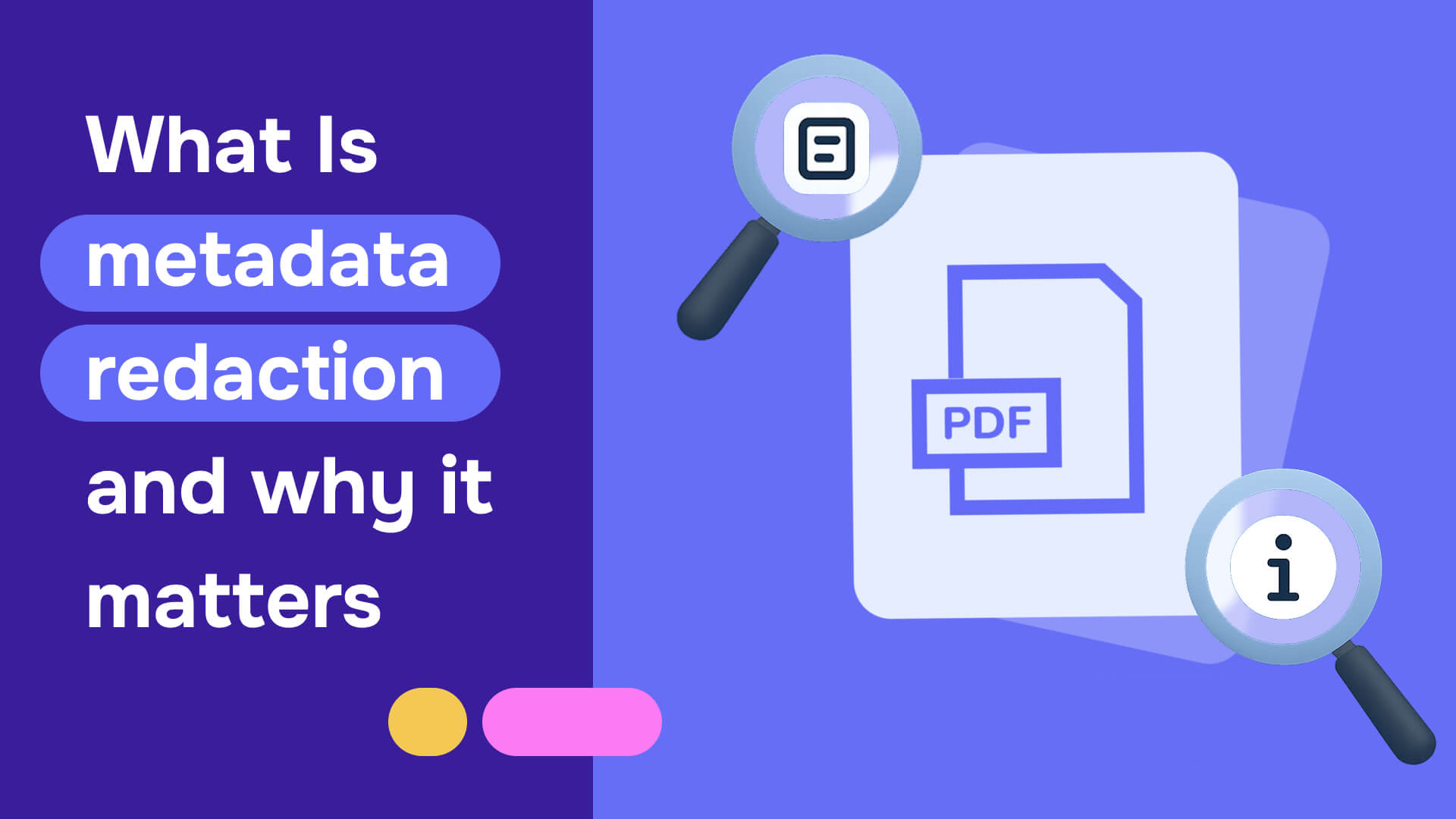The healthcare industry runs on data. From electronic health records (EHRs) to insurance claims and clinical research, hospital systems manage enormous volumes of sensitive information every day. While this data enables better care and innovation, it also brings tremendous responsibility: protecting patient privacy. This is where redaction plays a critical role.
Redaction for hospital systems ensures compliance with HIPAA (Health Insurance Portability and Accountability Act) and other privacy laws by removing Protected Health Information (PHI) before it’s shared, analyzed, or stored externally. Without proper medical record redaction, even a single exposed document could lead to devastating consequences - financial penalties, reputational harm, and loss of patient trust.
In this article, we’ll explore why redaction is essential for healthcare organizations, what HIPAA requires, how redaction applies to medical records, and why automated solutions like Redactable are the most effective tools for ensuring healthcare data privacy and compliance.
What is redaction in healthcare?
In healthcare, redaction refers to the process of permanently removing or obscuring sensitive information - most often PHI - from a document before sharing or publishing it. Unlike simply blacking out text or hiding it visually, true redaction means the information is completely deleted from the file’s underlying data structure, ensuring it can never be recovered.
Common examples of PHI that must be redacted include patient names, addresses, phone numbers, medical record numbers, birth dates, email addresses, and insurance policy numbers. But PHI can also appear in less obvious places - handwritten notes, lab results, images, or even metadata. That’s why comprehensive redaction software is necessary to protect data across all formats and file types.

Why redaction is critical for hospital systems?
Hospitals operate in one of the most regulated and data-sensitive industries on earth. Every department — from admissions to billing — handles PHI daily, making the risk of accidental exposure high. The consequences of a single breach can be catastrophic.
1. HIPAA redaction compliance
HIPAA’s Privacy Rule mandates that all patient data be protected and only disclosed when necessary for treatment, payment, or operations. When PHI is shared outside these use cases, it must be de-identified or redacted. Redaction ensures compliance by stripping identifiable data before information is transmitted or used for research, audits, or litigation.
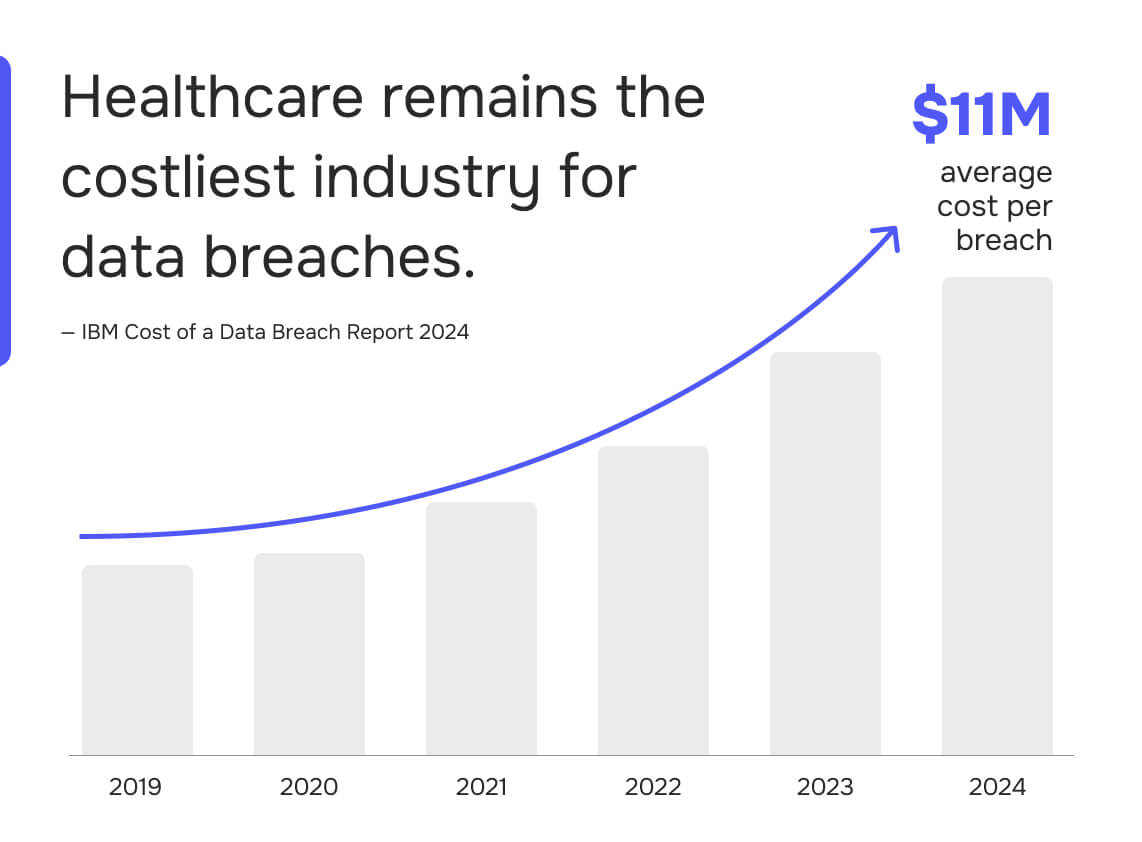
2. Preventing data breaches
Healthcare data breaches are not only costly but increasingly common. IBM’s 2024 Cost of a Data Breach Report revealed that healthcare remains the most expensive industry for breaches, averaging over $11 million per incident. Automated redaction minimizes this risk by ensuring that any document leaving your system is stripped of all sensitive information.
3. Enabling ethical research and AI development
Hospitals are central to medical innovation, but sharing real-world data for studies or AI model training must be done responsibly. Proper redaction allows hospitals to contribute to progress without exposing patient identities.
4. Building patient trust
Patients expect absolute confidentiality. Redaction demonstrates your institution’s commitment to their privacy - a powerful driver of trust in an era of digital healthcare.
Understanding HIPAA redaction requirements
The HIPAA Privacy Rule identifies 18 personal identifiers that must be removed to consider data 'de-identified.' This is known as the Safe Harbor Method. These identifiers include names, geographic locations smaller than a state, dates (except year), contact information, SSNs, medical record numbers, and biometric data, among others.
Alternatively, the Expert Determination Method allows a qualified expert to certify that the risk of re-identifying an individual is minimal. Regardless of the method, the goal is the same: eliminate the possibility that any data point can be traced back to a specific patient.
Effective redaction ensures that shared data meets HIPAA’s de-identification standards and protects your hospital from potential penalties.

Common use cases for redaction in hospital systems
Hospitals use redaction across many operational and compliance workflows. Some common examples include:
- Medical record requests: When patients or third parties request records, redaction ensures only relevant information is shared.
- Legal discovery: Redaction protects unrelated PHI when responding to subpoenas or audits.
- Research and data sharing: Clinical trials and studies require large datasets that must be de-identified.
- AI and machine learning: Hospitals training AI systems can safely use redacted data for model development.
- Public health reporting: Hospitals can share necessary data with authorities while maintaining patient anonymity.
The limitations of manual redaction
Historically, redaction was performed manually - a time-consuming and error-prone process. Staff would review each page, mark PHI, and apply digital blackouts. Unfortunately, this approach is inefficient and risky. Even one missed identifier can result in a HIPAA violation.

Manual redaction also lacks consistency. Different staff members may interpret policies differently, and without automated validation, errors often go unnoticed. In addition, black box overlays may not permanently delete the underlying text, meaning someone could still recover it. Hospitals handling high document volumes simply cannot rely on manual processes alone.
The benefits of automated redaction software for hospital systems
Modern hospital systems are turning to AI-powered redaction tools to streamline compliance and eliminate human error. Automated redaction software uses artificial intelligence to detect and remove PHI across structured and unstructured documents - including PDFs, images, EHR exports, and scanned forms.
Key benefits include:
- Speed: Redact thousands of records in minutes, not days.
- Accuracy: AI models trained on healthcare data identify PHI with high precision.
- Scalability: Handle any volume of documents without expanding headcount.
- Auditability: Create logs that show exactly what was redacted and when.
- Consistency: Every file is processed according to the same redaction policy.
- Security: Permanent redaction prevents metadata leaks and unauthorized recovery.
Read also: What are the three rules of HIPAA?
Best practices for redacting medical records
Implementing a robust redaction strategy requires both technology and policy. Hospitals can strengthen their compliance posture by following these best practices:
- Identify all PHI sources: Conduct regular audits to map where PHI exists, from EHR systems to emails.
- Leverage OCR and AI: Many medical records are scanned or handwritten. Optical Character Recognition (OCR) allows AI to detect PHI even in images.
- Establish clear redaction protocols: Define which data types require redaction and under what circumstances.
- Validate outputs: Randomly review redacted samples for accuracy and completeness.
- Train your team: Educate staff on PHI handling, HIPAA laws, and redaction software use.
- Maintain audit trails: Keep logs of redaction activity for audits and compliance verification.
Why Redactable is the best choice for hospital systems?
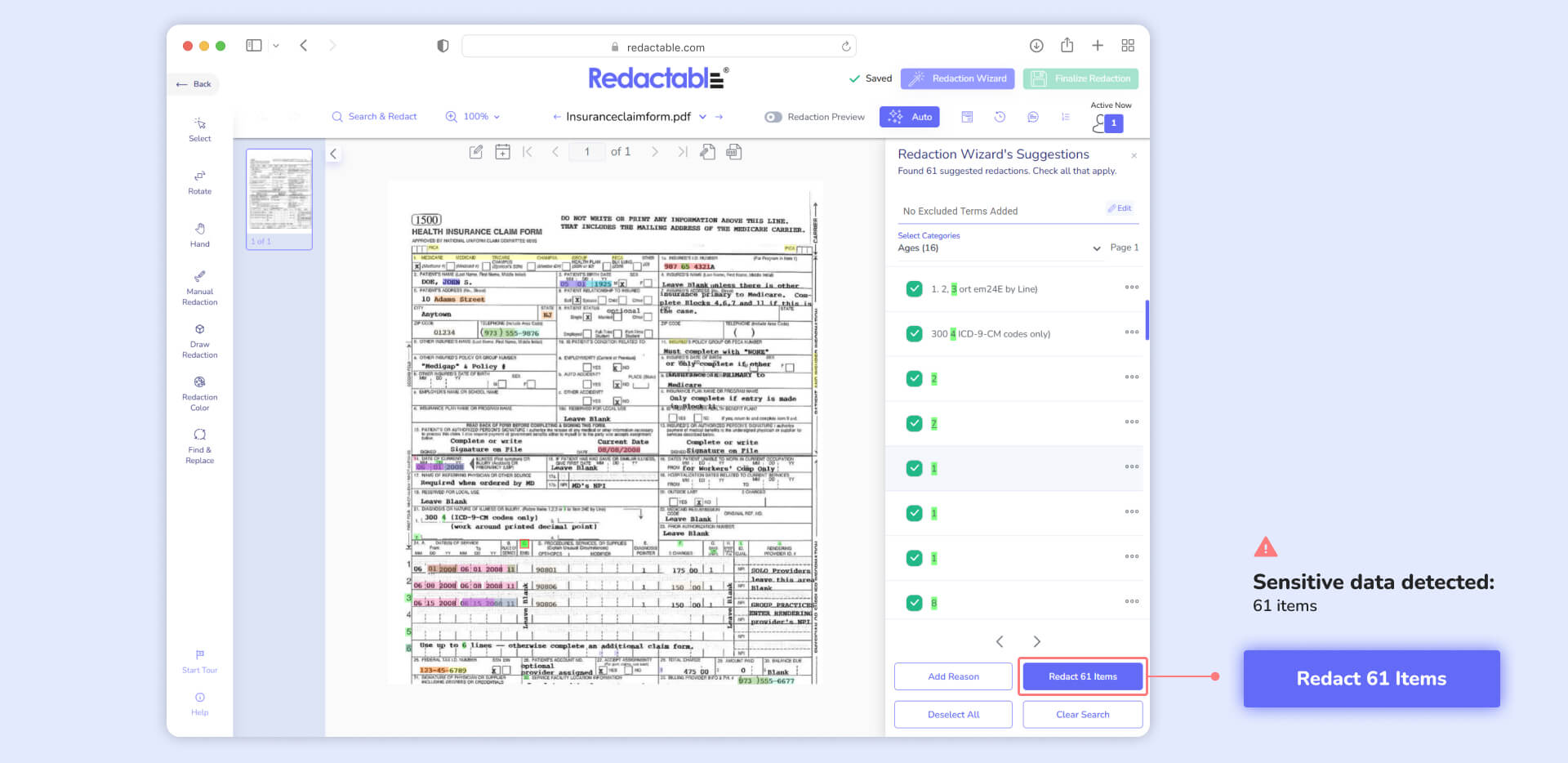
When it comes to HIPAA redaction software, Redactable is the trusted partner for healthcare organizations seeking speed, accuracy, and compliance. Purpose-built for regulated industries, Redactable delivers an AI-powered solution that handles every aspect of document redaction with zero compromise on security.
What sets Redactable apart:
- HIPAA-compliant by design: Every redaction meets HIPAA’s privacy and security standards.
- AI-powered precision: Detects and removes PHI in both text and images, including contextual identifiers.
- Seamless integration: Works with existing hospital systems, from EHRs to document management tools.
- End-to-End encryption: Protects data in transit and at rest, with zero data retention.
- Scalable architecture: Handles redaction for thousands or millions of records effortlessly.
- Comprehensive reporting: Provides audit-ready documentation for every action.
Redactable isn’t just redaction software - it’s a compliance solution built for modern healthcare.
Conclusion: The future of redaction in hospital systems
As healthcare systems continue to digitize, data protection becomes more complex and more vital. HIPAA redaction is no longer a back-office task- it’s a foundational element of patient trust and institutional integrity.
By adopting automated solutions like Redactable, hospitals can confidently protect patient data, reduce human error, and maintain full compliance. In an era where data breaches dominate headlines, proactive healthcare redaction isn’t just good compliance - it’s good medicine.
Schedule a demo to see how Redactable can transform your hospital’s compliance strategy.

